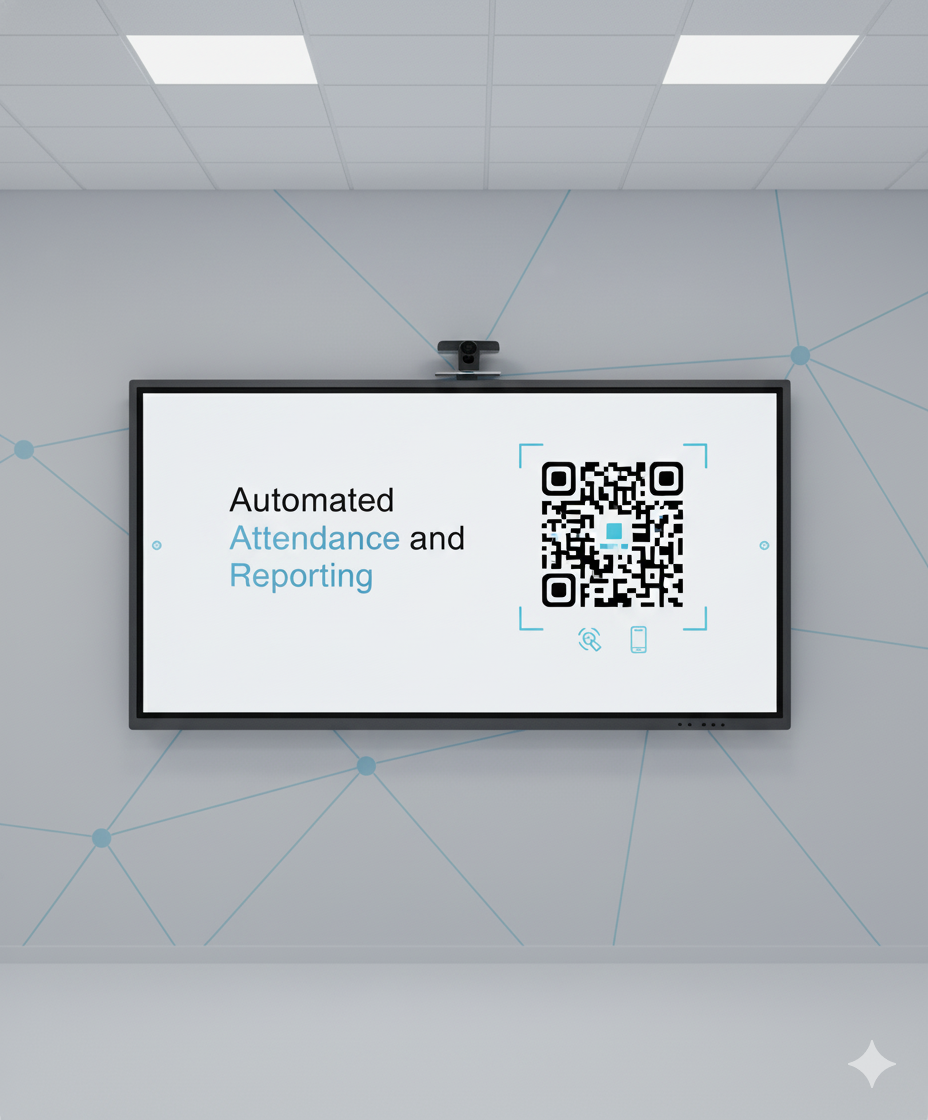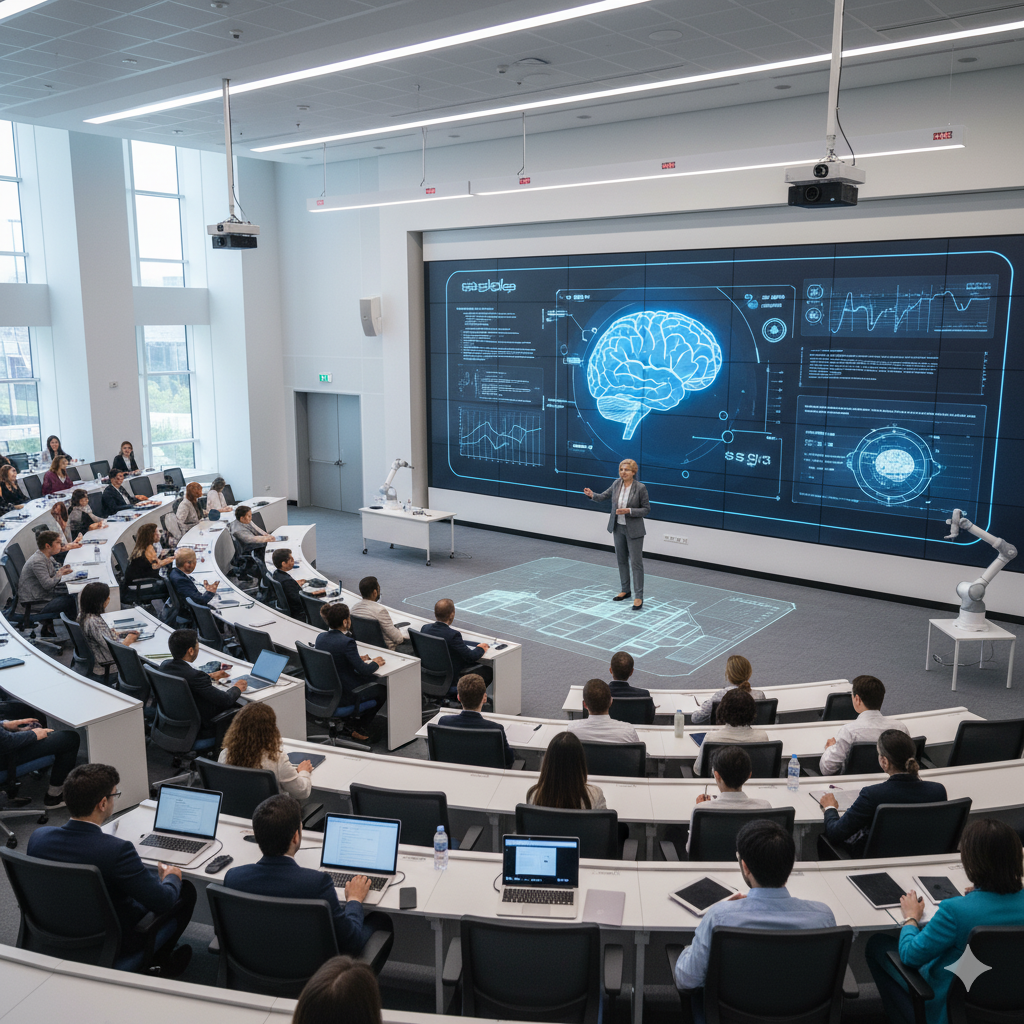What Is a Digital Classroom? A Guide to Future-Ready Education in India

Before we jump into all the technical stuff, let’s ask ourselves this question: Why do we need modern digital classrooms? What makes digitizing our educational spaces so important?
The world is changing fast. Our students, the next generation, are tech natives. From a young age, they’ve engaged with technology like smartphones, tablets, and YouTube for learning. How can we expect to engage them with traditional teaching methods? More importantly, how can we equip them for the future if we aren’t using the tools of the future? The answer is simple: we can't.
Digital classrooms are no longer a luxury—they’re a necessity. A digital classroom setup doesn't just make lessons more engaging; it makes them more accessible, inclusive, and adaptable. With this shift, schools aren’t just places to learn—they become interactive, collaborative environments that foster innovation.
If you're an educator looking to take the first step or just trying to make sense of what "going digital" really means in practical terms, you’re in the right place. Let’s explore what a future-ready classroom looks like.
What is a Digital Classroom?

At its core, a digital classroom is an environment where technology enhances the learning experience. It is a classroom where every lesson isn’t just spoken or written on a blackboard but displayed on a 200-inch interactive screen. The students aren’t just listening passively but engaging with the material, collaborating with their peers digitally, and accessing the lesson recordings on their devices for revision. This is the future we’re talking about. But how do you design a classroom with these capabilities?
3 Key Features of a Digital Classroom
1. Interactive Projector:
First and foremost, a modern digital classroom setup is powered by an interactive projector. This isn’t just any projector that throws content on a wall. Imagine an expansive display—120 inches, 150 inches, or even up to 200 inches in HD—right at your fingertips. Teachers can annotate, highlight, and easily navigate lessons, making the content more interactive.
2. Seamless Online-Offline Integration:
One of the major challenges of today’s world is the fluidity between online and offline teaching. Teachers need a system that supports hybrid teaching, where online and offline classes happen simultaneously. This is the point where technology steps in to close the gap. Students who are physically present in the class get a front-row seat to an immersive lesson, while those joining online don’t miss a beat, thanks to live streaming capabilities. Even better, the lessons are recorded and stored digitally, so students can revisit the material anytime.
3. Powerful Hardware:
To run such a system smoothly, we need hardware that can keep up. Think about this: a computing unit powered by Intel i5/i7 processors with Windows 11. Why does this matter? Because a lagging system can ruin the flow of a lesson. With this kind of power, teachers can run multiple applications, manage multimedia resources, and ensure the system is smooth and efficient.
What is Digital Collaboration in a Classroom?
Let’s talk about one of the biggest benefits of the digital classroom: digital collaboration.
Gone are the days of group projects where students huddle around one tiny textbook or fight over who gets the mouse to do the PowerPoint. In a smart classroom, students can collaborate on projects in real-time, right on the big screen or on their own devices. They can brainstorm ideas, create visual presentations, and share research—all through a shared digital space. Digital collaboration in a classroom makes learning more dynamic and engaging, encouraging creativity and critical thinking.

You’re no longer the 'sage on the stage,’ delivering a one-way lecture. Instead, you become a facilitator, guiding students through activities where they take the lead. This level of engagement fosters independent learning skills, which are crucial in preparing students for the real world. And what’s more, students are no longer limited to collaborating with those in their immediate classroom. With the right tools, they can engage with peers from different cities, countries, or even continents, expanding their worldview and enhancing their global competence.
How Interactive Tools Bring Learning to Life
What truly excites students today? It’s not just a lecture or a textbook—it’s the experience.
Imagine this: you walk into a science class, and instead of diagrams on the board, students are interacting with 3D models. Without stepping outside the classroom, they’re zooming into the human body, uncovering Earth’s layers, or virtually touring the pyramids of Egypt. That’s not just teaching—it’s transforming the way students see and understand the world.
Immersive audio-visuals play a big part here. Powerful classroom speakers make history documentaries or language lessons feel cinematic, with crisp, clear, lifelike sound. Pair that with high-definition visuals, and suddenly, you’re engaging more than just the eyes and ears—you’re activating curiosity.
But it doesn’t stop there.
With real-time digital collaboration in a classroom, students can:
- Join live polls and quizzes on their devices
- Brainstorm together using interactive whiteboards
- Participate in live discussions and solve problems collaboratively
The result? Lessons that are not just interactive, but unforgettable.
Bridging the Learning Gap: Anytime, Anywhere Learning
One of the most common concerns schools have is:
“What happens when students are absent?”
Here’s the beauty of a digital classroom: learning doesn’t stop when the school bell rings. All lessons are recorded and accessible on demand—anytime, anywhere.
Students who miss a lesson or wish to go over a concept again have the option to:
- Watch the lesson again at their own pace
- Pause, rewind, or fast-forward as needed
- Review content on their personal devices
This flexibility empowers students to take control of their learning, like having the classroom in their pocket. And it’s not just about playback—it’s about creating personalized learning experiences that match individual learning speeds.
Smarter, Faster Feedback with Digital Assessments
Another game-changer in digital classrooms? Real-time assessments.
Forget waiting weeks for test results. With the right digital classroom equipment and tools, teachers can:
- Conduct live quizzes and polls
- Use interactive exercises to gauge understanding on the spot
- Instantly see where students are struggling
For teachers, this means:
- The ability to adapt lessons in real-time
- Quickly address learning gaps
- Ensure no student is left behind
For students, this means:
- Immediate feedback to correct mistakes
- Lower pressure and better understanding of their progress
- A chance to develop a growth mindset, where mistakes are learning opportunities, not failures
Bringing It All Together: A Holistic Learning Environment
At the end of the day, a digital classroom is more than just a fancy setup. It’s a holistic learning environment that caters to the needs of both teachers and students.
For teachers, it reduces administrative tasks, allowing them to focus more on teaching. It also enables them to diversify their teaching methods, making lessons more engaging and tailored to the needs of individual students.
For students, it creates a space where they can learn in a way that suits them best. Whether they’re visual learners, auditory learners, or hands-on learners, a digital classroom provides the tools to cater to every learning style. And let’s not forget about the digital collaboration aspect—it fosters teamwork, creativity, and critical thinking, all essential skills for the 21st century.
Steps to Successfully Implement a Digital Classroom Setup
So, now that we know what a digital classroom can do, how do we implement it in our schools?
1. Assess Your Current Setup: Start by looking at your current classroom setup. Do you have the necessary infrastructure? Is your staff ready for the transition?
2. Training & Professional Development: While the tech is essential, training your staff to effectively use it is equally important. Teachers need to feel confident in utilizing these tools to enhance their teaching, not replace it. Training programs and hands-on workshops will help your teachers master the art of hybrid teaching.
3. Adopt a Scalable Solution: When choosing a digital classroom solution, make sure it’s scalable. You don’t need to go all in on day one. Start small—perhaps with a few classrooms—and expand from there based on the results and feedback you receive.
Roombr Digital Classroom supports schools at every step of this journey with scalable setups, hands-on teacher training, and tech that fits your unique classroom needs.
Why Does This Transition Matter?

This shift to a digital classroom isn’t just about keeping up with trends; it’s about equipping our students for the future. We need to ask ourselves: Are we preparing our students for the world they’ll face, or are we preparing them for the world we grew up in? The answer is clear.
The world they’ll step into is fast-paced, tech-driven, and constantly evolving. A digital classroom equips students with the skills they’ll need—critical thinking, collaboration, adaptability, and technological proficiency. It’s not just an investment in technology; it’s an investment in our future.
Conclusion
The future of education is digital, and it’s already here. The question is, are we ready to embrace it? With the right digital classroom setup, we can make sure our students are not only prepared for the future but that they thrive in it. Let’s not wait for the world to change around us—let’s lead the change. Let’s create classrooms where learning knows no bounds, where collaboration and innovation are at the forefront, and where teachers and students are empowered to do their best work.
Frequently Asked Questions By Educators
1. How can we train teachers who aren’t tech-savvy?
Start with foundational workshops, and let teachers experience the technology hands-on. Gradual exposure, rather than overwhelming them all at once, is key. Once they see how much easier it makes their teaching, they’ll be eager to learn more.
2. What if our school doesn’t have strong internet access for hybrid classes?
Digital classrooms can operate offline as well! You can use the interactive projector and record lessons for students to access later. Having robust offline features means learning won’t stop, even with internet issues.
3. Will it be expensive to transition to a digital classroom?
While there’s an upfront cost to adopting a digital classroom setup, the long-term benefits far outweigh the initial investment. Many providers offer scalable solutions, so you can start small and expand as needed, which makes it a more manageable transition financially.
Embrace Future-Ready Digital Classrooms with Roombr
Every great change begins with a single step. If you’re curious about how a digital classroom can make a difference for your students and teachers, we’re here to help. Reach out to explore simple, practical ways to start your journey toward a future-ready classroom.
Book a personalized demo and see how easy it is to transition to a digital classroom.
Aneesh Kumar
Share
Step Into the future of
Education with Roombr


















